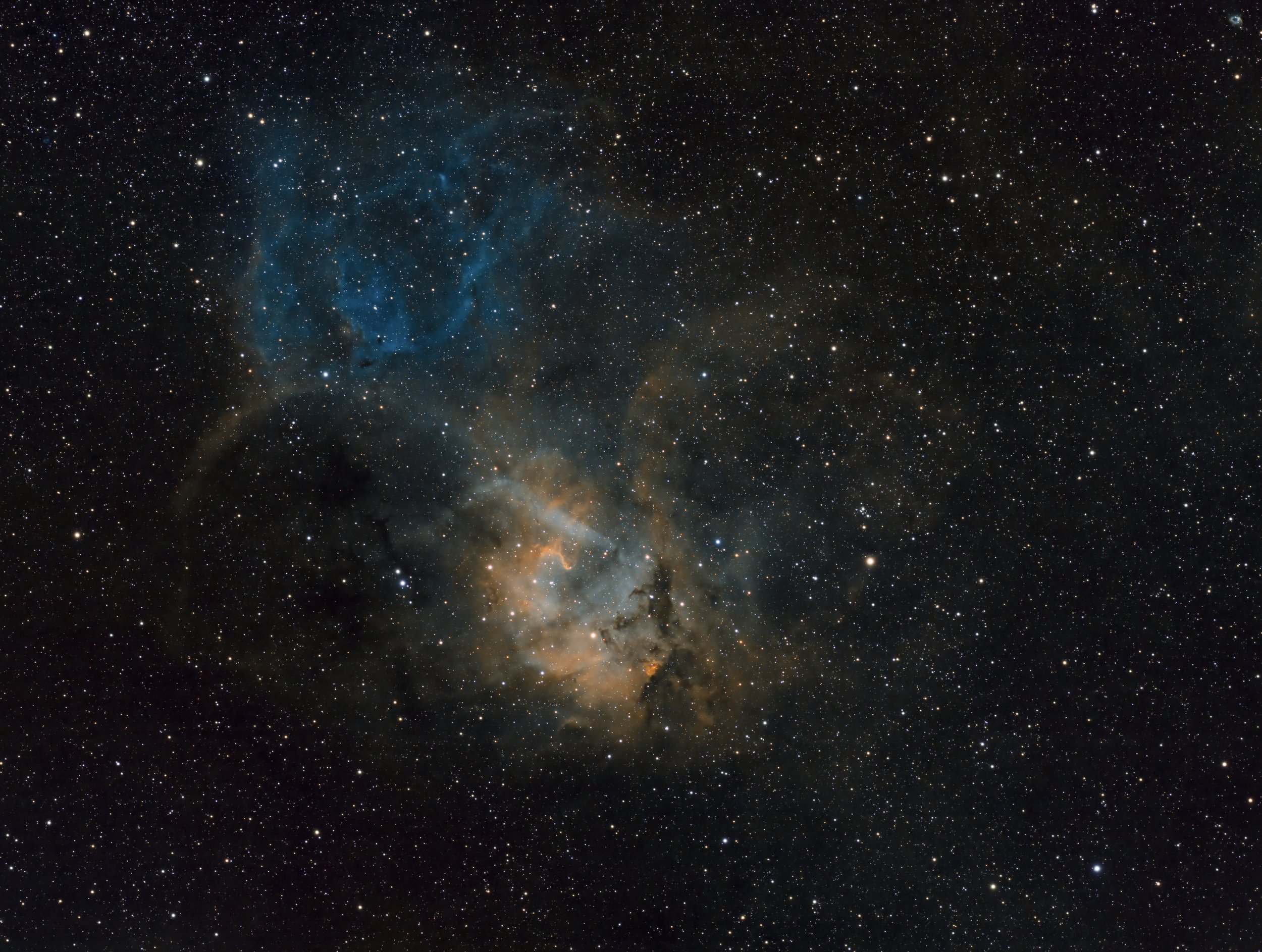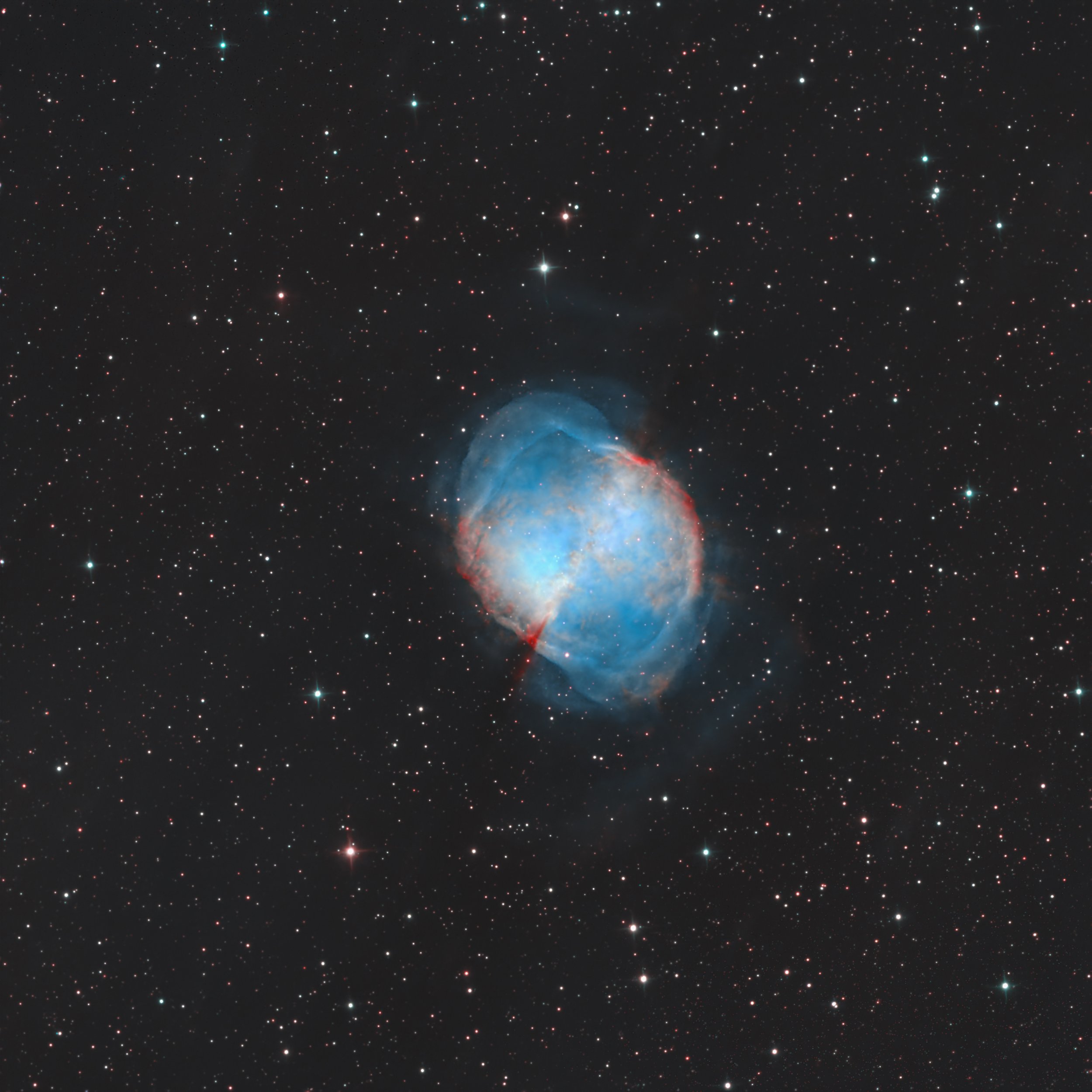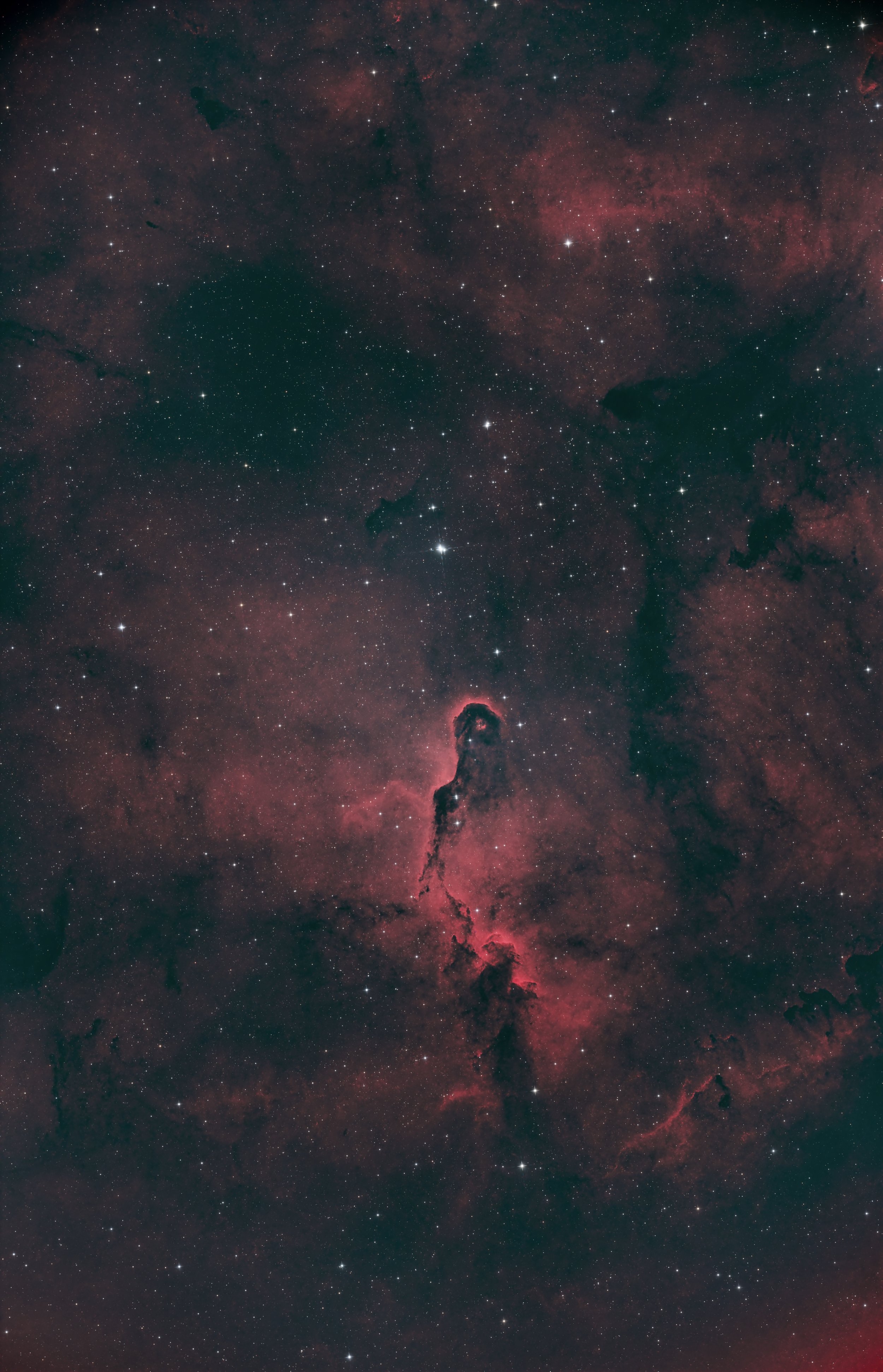The little Dumbbell Nebula

First light for new gear is always fun, and this one didn’t disappoint! This is the Little Dumbbell Nebula (M76), captured using my new Carbon Star Ritchey-Chrétien telescope, paired with the QHY533 mono camera and mounted on my trusty AM5. The fact that I was able to grab this beauty right from my backyard in Davie, Florida, makes it even more special. Over three clear nights (spread across about a week), I racked up 15 hours of total integration: 4 hours of H-alpha, 6 hours of OIII, and 5 hours of SII. The effort really paid off—check out those vibrant details in the nebula’s bipolar structure!
M76 doesn’t always get the same love as its bigger, flashier cousin, the Dumbbell Nebula, but it’s an incredible target in its own right. Sitting around 2,500 light-years away in the constellation Perseus, it’s one of the faintest Messier objects. That makes it a bit of a challenge to photograph, but hey, challenges are where the magic happens, right? What’s wild is that the nebula’s unique hourglass shape is caused by a dying star ejecting gas, but here’s the kicker: the central star might actually be a binary pair. Imagine one star feeding all that glowing gas while the other sculpts the nebula’s shape—it’s like cosmic teamwork!
I’ve been a dedicated to Squarespace fan for 20 years. Love the product, people and company.





